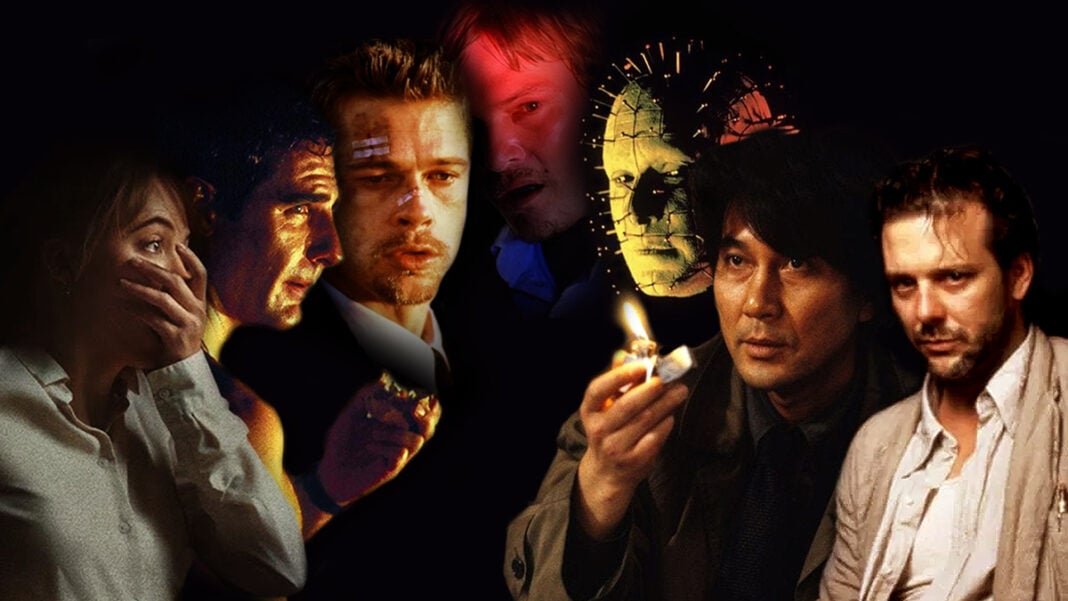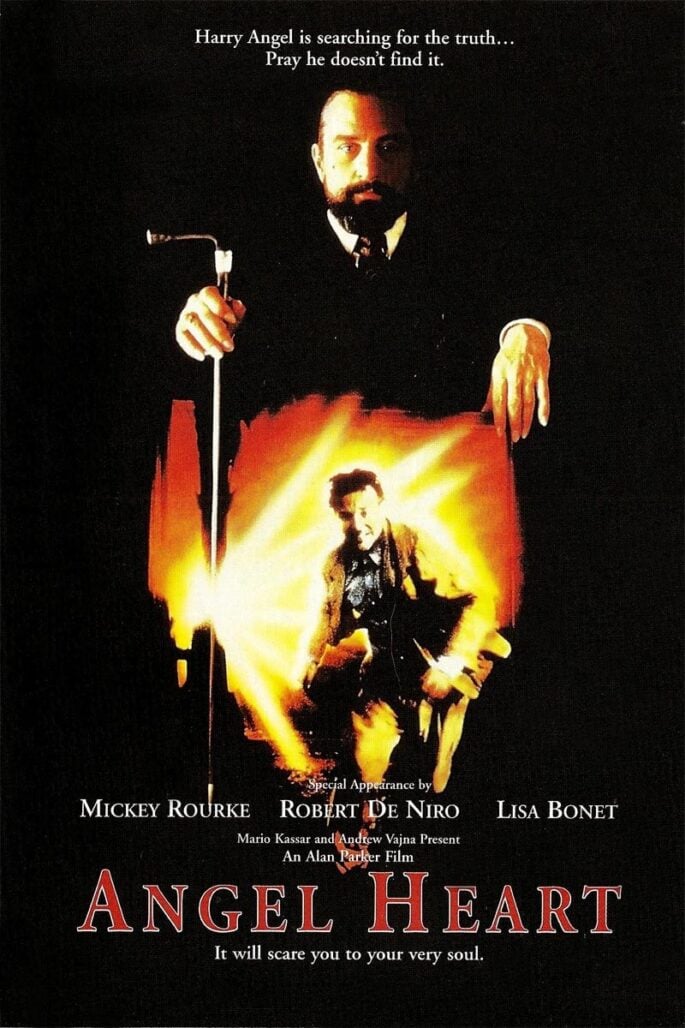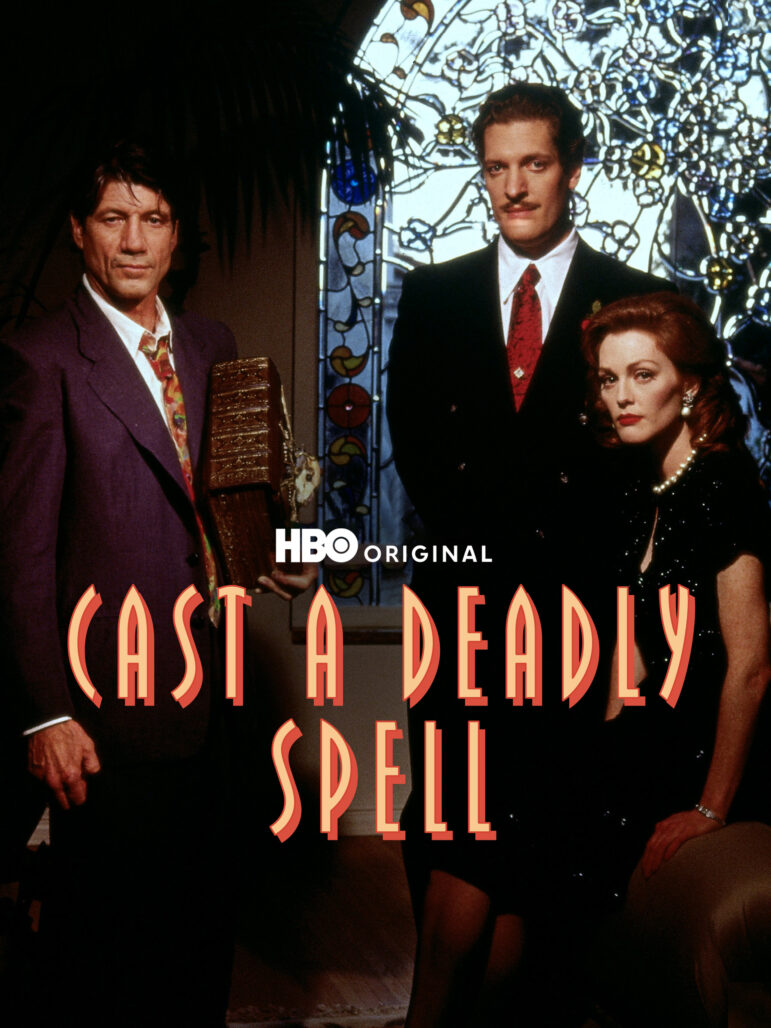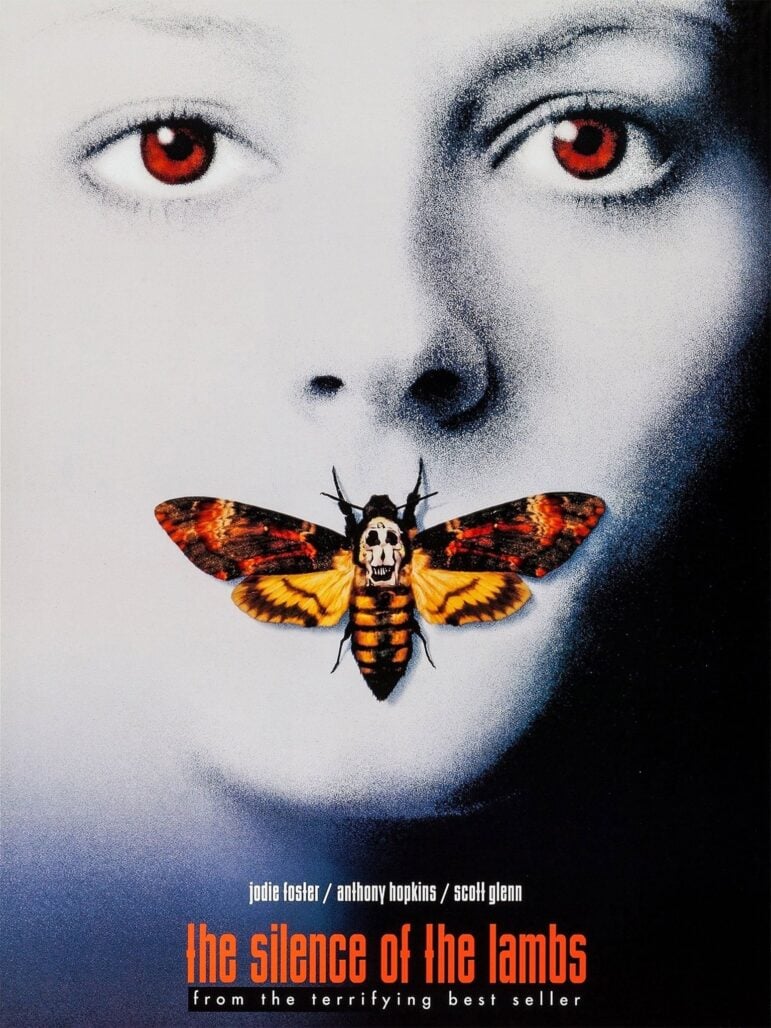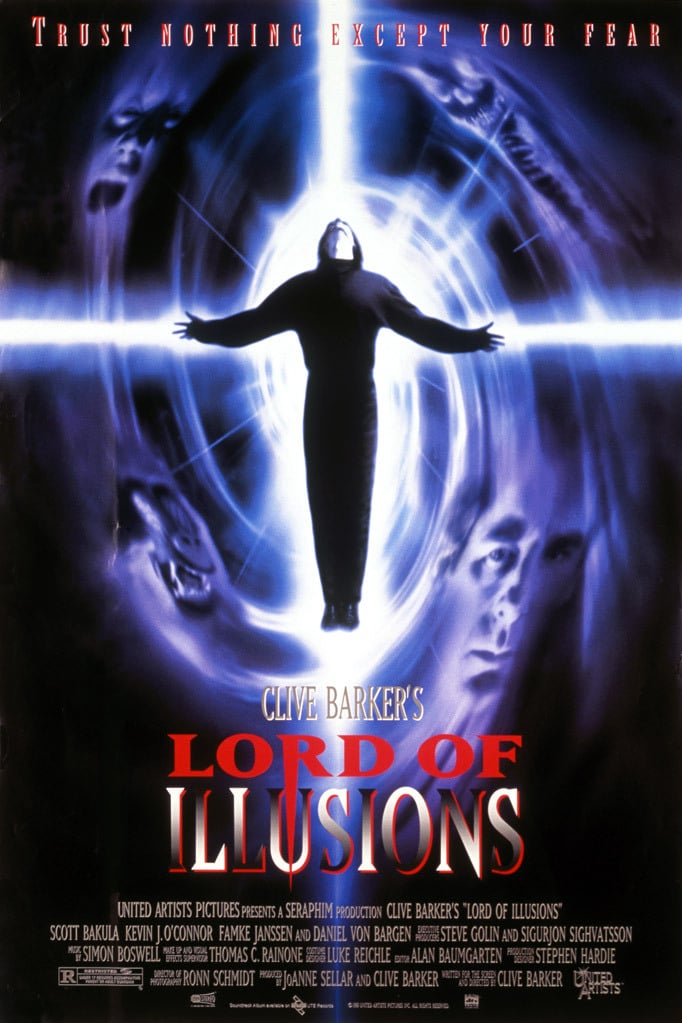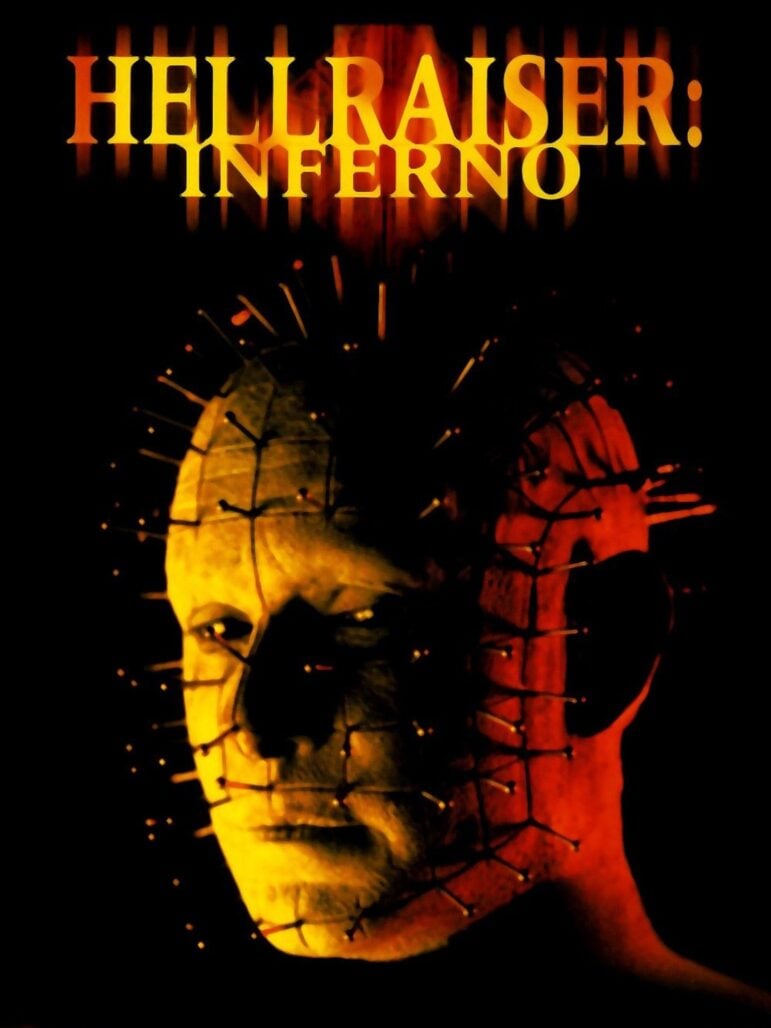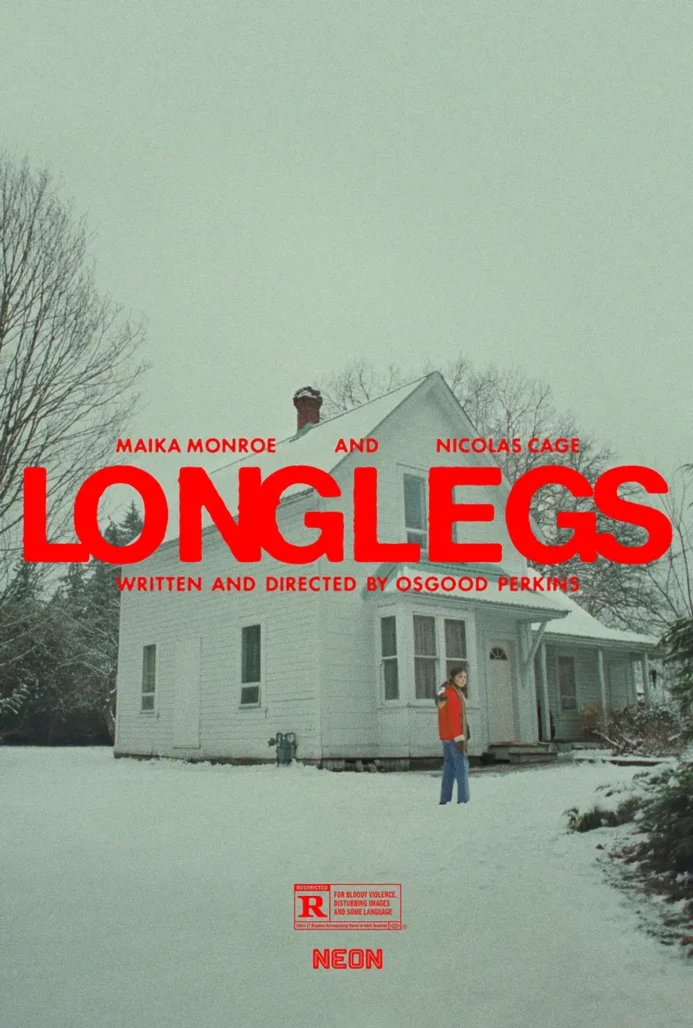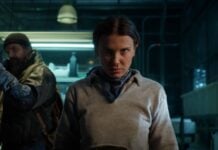Horror and Noir have danced together at different moments in time, but never so elegantly as when they waltzed in the decadent 80s and 90s. This is the era of the Neo-Noir in film. Gone was the traditional detective – the fedora-wearing, trenchcoat-clad, smart-mouthed, tough-looking chainsmoker who is immune to corruption and shady dames. No longer would the classic femme-fatale be relegated to victimhood. As for Horror? It became as nihilistic and disturbing as the blackest of Noirs.
Detective Horror pushes past logic and dives fully into the unknown, the language of Film Noir intermingling with the even darker side of cinema for a mix of doom and dread all its own. Detectives are no longer knights in a dark kingdom, but part of the evil order itself. And when they do have a modicum of morality, it is usually torn to shreds by the time the credits roll. This is where Detective Horror thrives: a cinematic world where serial killers, Eldritch horrors, dark magic, and Satan himself co-exist with the most corrupt of souls. There is some fun to be had, and some detectives manage to rise to the occasion, though not without acknowledging first that their world remains forever-changed.
Manhunter (1986)
Before redefining the Crime genre with his L.A. Neo-Noir epic Heat, Michael Mann gave us the first interpretation of Thomas Harris’ novel “Red Dragon”, which in turn first introduced the famed cannibal Hannibal Lecter. Manhunter, though, focuses on retired FBI profiler Will Graham (William Petersen), who is asked to help catch a disturbing serial killer, The Tooth Fairy (Tom Noonan). Graham begrudgingly takes on the job, and even seeks help from the man who almost killed him, Dr. Hannibal Lecktor (Brian Cox). At the same time, we also follow The Tooth Fairy’s day to day life (whose real name is Francis Dollarhyde), planning his next killing, and his eventual romance with blind co-worker Reba (Joan Allen).
Though Silence of the Lambs would become the most successful and well-known film version of Harris’ world of FBI profilers and serial killers, Manhunter is an intense and disturbing piece of Detective Horror that has rightfully found its place amongst horror fans. Boasting Mann’s neon-soaked and dreamy aesthetic of the 80s, and a grounded and believable cast, the film uses its heavy atmosphere to explore both the horrors of rising serial killings of the era, as well as the perilous journey towards understanding them. A moodier piece than Silence of the Lambs, it laid the groundwork for what would become the wonderfully disturbing Mads Mikkelsen-led Hannibal series.
Angel Heart (1987)
Quite possibly the Detective Horror film that ticks every single box for the genre, Alan Parker’s Angel Heart is the prime example of how far Horror and Noir could go in the 80s. Taking place in 1955 (a year when Noir was at its most nihilistic, curiously enough), it tells the story of Private Detective Harry Angel (Mickey Rourke), who is hired by the mysterious Louis Cyphre (Robert DeNiro) to find a singer known as Johnny Favorite. The investigation eventually leads him to New Orleans, where he meets Favorite’s daughter Epiphany Proudfoot (Lisa Bonnet), and a whole cast of nasty characters. The thing is, everyone he meets ends up dead in varying macabre ways, Harry never heeding the warnings to step away from this cursed case.
Violent, disturbing, horrific, and controversial, Angel Heart mines the dark depths of the human soul and is unafraid to show them in all their gory detail on screen. It’s a punishing watch that mounts dread upon dread as Harry continues to find dead bodies and new clues, but its shocking revelations and nightmarish imagery make it impossible to look away. Mixing the dense atmospherics of Film Noir with the occult (voodoo and Satanism play a big part in the story) and a labyrinthine Detective story that turns into full-fledged Horror in a sensuous and mystical New Orleans setting, Angel Heart is the perfect devilish cocktail of Horror and Noir.
Cast A Deadly Spell (1991)
The one unapologetically fun and wild Detective Horror film on this list, Cast A Deadly Spell is a charming and impressively mounted pastiche of 1940s Noir and Lovecraftian Horror. In a strange, alternate 1948 Los Angeles, Private Detective Phil Lovecraft (Fred Ward) is hired by Amos Hackshaw (David Warner) to find a stolen book of spells, the Necronomicon. Though magic and creatures are common in this world, Phil refuses to use magic for his investigations, which turn up involving his former flame Connie Stone (Julianne Moore) and former LAPD partner turned mobster Harry Bordon (Clancy Brown). Phil’s investigation leads him towards a plot to summon the Old Ones (fans of H.P. Lovecraft will be right at home here) and battles with demons, gargoyles, and gangsters alike.
Directed by Martin Campbell (GoldenEye, Casino Royale) and produced by genre extraordinaire Gale Anne Hurd (The Terminator, The Walking Dead), this HBO film is a hidden gem of Horror and Noir. With impressive set design and practical effects, it perfectly captures the golden age of Film Noir and adds a striking splash of the Cthulhu mythos. Fred Ward and Julianne Moore excel at the tough and melodramatic Noir dialogue, while Campbell succeeds at crafting a genuinely strange and rich world of magic and Lovecraftian Horrors. It’s thrilling, goofy, bombastic, and just all around fun.
The Silence of the Lambs (1991)
The only Horror film to win a Best Picture Oscar, The Silence of the Lambs is as recognizable and iconic as The Wizard of Oz. It has inspired countless imitators and a whole slew of dark thrillers that have appeared across film and TV. The tale of FBI agent Clarice Starling (Jodie Foster) working together with cannibal serial killer Hannibal Lecter (this time Anthony Hopkins) to catch another serial killer, Buffalo Bill (Ted Levine), leans much more into procedural territory than Michael Mann’s Manhunter. Nevertheless, it’s just as terrifying and disturbing as we follow a young trainee agent coming face to face with an evil world that could rapture the most fragile mind.
Director Jonathan Demme goes for a more realistic and sombre look than Mann went with Manhunter. As a result, The Silence of the Lambs takes on a haunting atmosphere as the world on-screen resembles that which we see on the news and around us. But that doesn’t mean that Demme doesn’t indulge in the language of Horror for the most sadistic moments in the film. With Oscar-winning performances from Foster and Hopkins, their conversations are as tense and horrifying as any of the more disturbing set-pieces. And boy are there disturbing set-pieces. The climactic encounter with serial killer Buffalo Bill remains one of the crowning achievements in Horror, and Dr. Lecter is forever immortalized as one of cinema’s greatest villains. It’s a film that understands the inherent horror in crime drama, rendering the serial killer in a stark and terrifyingly real light.
Lord of Illusions (1995)
Clive Barker will forever be known for conjuring one of the most horrifying creations in all of cinema with the Cenobites and their grand priest Pinhead. Hellraiser was a monumental piece of Horror cinema that ushered in a new voice full of wondrous and macabre incantations. Though Barker did not find as much favor with his subsequent (and equally brilliant) films, Lord of Illusions has rightfully found the love it deserves. The wonderfully named Private Detective Harry D’Amour (Scott Bakula) has seen more than the regular PI. Having encountered a demonic force in an exorcism case, D’Amour takes on a more standard job in Los Angeles, only to be sucked into a world of dark magic and an apocalyptic cult worshipping the fearful sorcerer Nix (Daniel Von Bargen).
A lot of Detective Horror tends to go down one genre path more than the other, but Lord of Illusions, like Angel Heart, goes down both paths of doom steadily. Presenting a twisty supernatural mystery coupled with bloody and nightmarish setpieces, the film perfectly balances Noir investigation with the unraveling of unspeakable horror. Bakula’s D’Amour is a force of good in a world of evil, and while his journey leads him to the dark and unknown corners of magic’s underworld, he remains a hero through and through. Along the way, he encounters others less fortunate, like magician Philip Swann (The Mummy’s Kevin J. O’Connor), whose path leads all the way towards Noir-ish damnation. The horrors they experience (with Von Bargen delivering a stellar and mind-scarring villain with Nix) are enough to scare any Private Detective from taking another job in Los Angeles.
Se7en (1995)
Just as The Silence of the Lambs left a lasting impression in 1991 and inspired a new generation of Psychological Thrillers and dark Crime Procedurals, so did David Fincher’s Se7en provide the framework for a new kind of Detective Horror. Again taking the lead with the Procedural angle, Fincher and screenwriter Andrew Kevin Walker take us down to Hell in an unnamed city as an unknown killer is killing people according to the seven deadly sins. Jaded veteran detective William Somerset (Morgan Freeman) is begrudgingly partnered up with young hotheaded David Mills (Brad Pitt) to crack the case and figure out the next victims. But the killer is always one step ahead, and he’s just getting started.
Se7en’s reputation precedes it, and though most remember its shocking ending and stylized high-contrast visual style and violence, it’s worth noting just how much it culls from the Film Noir detective. By focusing on a decaying city, itself a character in the film, Se7en takes cues from classic city Noirs like Chinatown and The Big Sleep. The disgusting crime scenes and gruesome acts of violence are but a reflection of the world these detectives are trying to ineffectively bring to order. It’s a film about disillusionment and doomed ideals, where crime is but another word for horror.
Cure (1997)
Despite all the Psychological Thrillers popping up around the world in the 90s, the creepy Crime movies and edgy Neo-Noirs, there is nothing quite like what Kiyoshi Kurosawa put onto celluloid with Cure. Striking and dreadful right out the gate, Cure begins with a strange killing: a man kills a woman, cuts an X onto her upper torso, and then forgets he ever did it. Soon after, another murder occurs, the same X on the body, and a perpetrator with no memory of having committed the murder. Detective Kenichi Takabe (Kōji Yakusho) has no explanations, though he soon will be confronted by a hypnotist with a power too strange and unreal for his aggressive approach.
Cure is one of the slowest burns on this list, and that is saying something. For director Kurosawa, visual atmospherics are not enough, he also makes you feel the weight of a scene through time and drawn-out dialogue. The result is an insurmountable amount of dread, made all the more unnerving thanks to the film’s stark and mundane look, as well as its sudden bursts of violence. But its true well of horror comes from its attention to character, as Detective Takabe spirals out of control against a case he cannot comprehend and his inability to deal with his own demons. Noir and Horror both manifest in their purest forms.
Fallen (1998)
What if Se7en went supernatural? If the murders were being committed by the spirit of a dead killer possessing the bodies of unsuspecting civilians? The answer to these questions is Fallen, a Thriller taking advantage of both the success of Se7en and star of the moment Denzel Washington. This all makes it sounds like some sort of cash grab, but it most certainly is not. Fallen is an impressively shot and nihilistic film that leans heavily into its most outlandish ideas and delivers a truly horrific experience.
As serial killer Edgar Reese (Elias Koteas) dies on the electric chair, his spirit (or a spirit possessing him?) escapes into another body. Detective John Hobbes (Washington), proud of having apprehended Reese, is soon thrown into chaos as new occult-killings begin to pile up and they all bear Reese’s signature. A creepy film that without a doubt is more concerned with its Horror elements than the Detective angle, it’s nevertheless a great example of Detective Horror as the killer eats away at Hobbes’ sanity as well as his very moral fiber. Washington is a great boon to the film, and a supporting cast that includes Donald Sutherland and John Goodman makes for a macabrely entertaining ride.
Hellraiser: Inferno (2000)
By the time Hellraiser: Inferno came in the form of a Direct-To-Video release, Clive Barker had nothing to do with the franchise’s productions. When the creator of your franchise exits, it’s clearly a bad omen. However, though there are plenty of subpar Hellraiser films, Hellraiser: Inferno is an exception. Directed by then newcomer Scott Derrickson (Sinister, The Black Phone 1 & 2), Inferno is a refreshing take on the Cenobite lore wrapped around a hellish Noir tale.
Starring Craig Sheffer (star of Barker’s second directorial effort, the cult classic Nightbreed), the film revolves around the life of seedy and corrupt detective Joseph Thorne, who finds the mythical Lemarchand’s Box at a gruesome crime scene. After solving it, of course, Thorne begins to experience nightmarish visions and as he further digs into the murder where the box was found, he is thrust into a surreal world of pain and torture with no escape. Led by a strong performance from Sheffer, this downward spiral of a movie smartly uses its Noir devices for a trip through Hell that is disturbing, frightening, and respectful of its source material. Doug Bradley reprises his role as Pinhead, but this is Sheffer’s show, a great late-career performance worthy of the Hellraiser mythos.
Cigarette Burns (2005)
This may be a controversial addition as the main character is not a detective in the traditional sense, but what transpires in John Carpenter’s Cigarette Burns very much scratches all the Horror and Noir itches until it draws blood. The eighth episode of Mick Garris’ monumental Showtime series Masters of Horror, it follows Kirby Sweetman (a very well-cast Norman Reedus), a man who specializes in finding rare film materials for wealthy collectors. He’s tasked by the odd Mr. Bellinger (Udo Kier) to find the surviving film print of the notorious La Fin Absolue du Monde, a film that’s said to have driven the audience mad and violent when first shown.
Unsurprisingly, all Hell breaks loose as Sweetman gets closer to the print, but what is surprising is just how truly grueling and disturbing Carpenter makes his journey. Dispensing with his widescreen aesthetic, Carpenter goes for an in-your-face, brutal display of horror paired with suggestive, hallucinatory glimpses of the cursed film at the center of the story. Sweetman’s investigation pits him against snuff filmmakers, secluded film critics, and obsessed cinephiles, all while he slowly contends with a breaking psyche and the horrors of his past. If that’s not Noir with a solid helping of Horror, I don’t know what is.
Longlegs (2024)
Just when one thought there wasn’t anything new to bring to the serial killer formula, in comes Osgood Perkins with a twisted Detective Horror film that cares less about procedures and more about overwhelming evil mood. Similarly to The Silence of the Lambs, a young FBI agent (Maika Monroe) is tasked with cracking the code to finding a serial killer. Thing is, while whole families are being massacred, there is no sign of the killer inside the house. The families are killing each other. And for some reason, Agent Lee Harker (Monroe), is able to see and feel things others cannot.
Longlegs is the most recent example of a film that mixes the Noir with Horror, but this is almost exclusively Horror ramped up to 11. Thanks in no small part to Perkins’ obsession with mood and atmosphere, sound design and cinematography doing the heavy lifting for this cryptic nightmare. And of course, that wonderfully fucked up performance by Nicolas Cage as the titular Longlegs. Hidden for most of the film, his mere presence is enough to fuel nightmares. The film tricks you into believing the story can be resolved via detective work, but there is something much more sinister at work, and Perkins makes sure you see and feel it.


